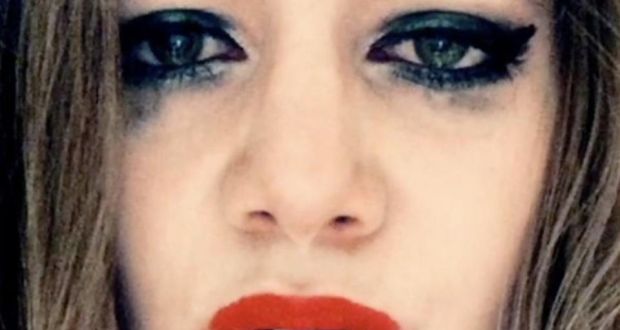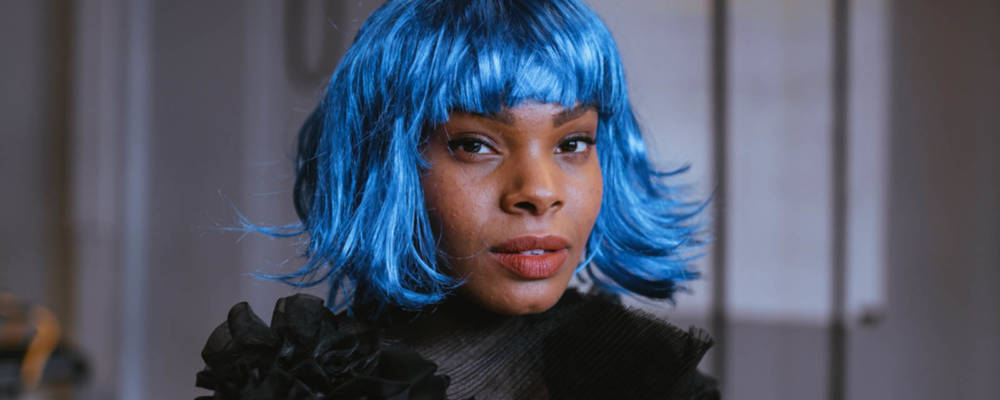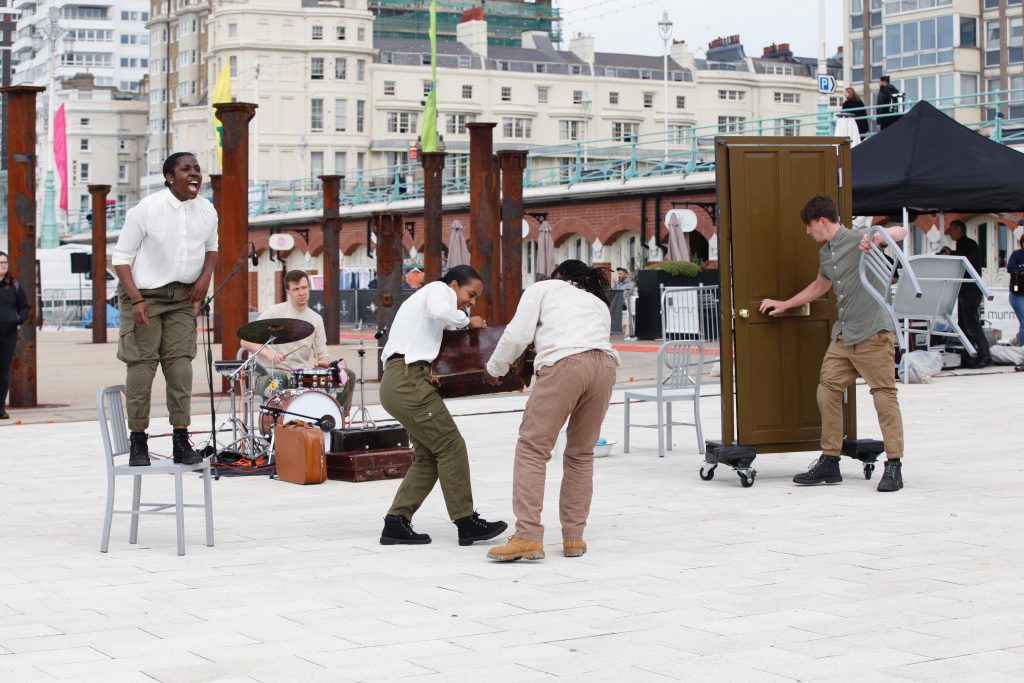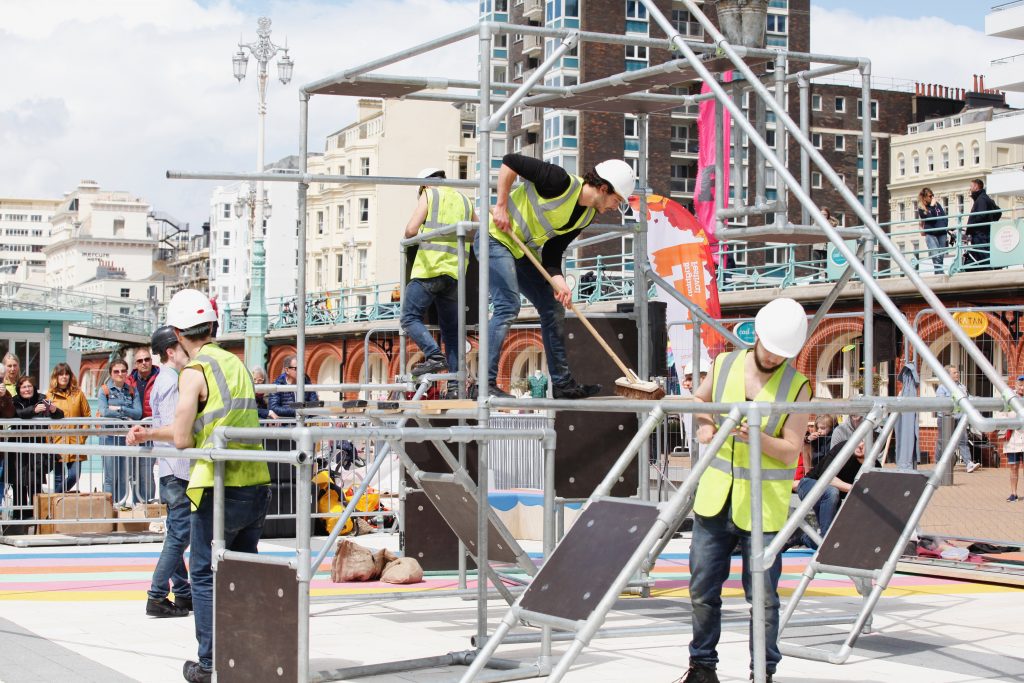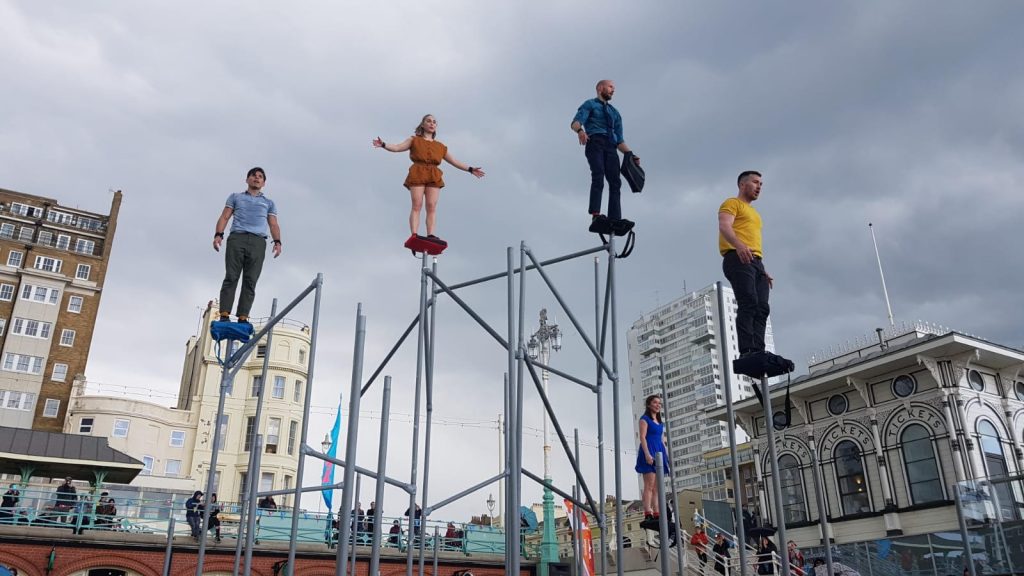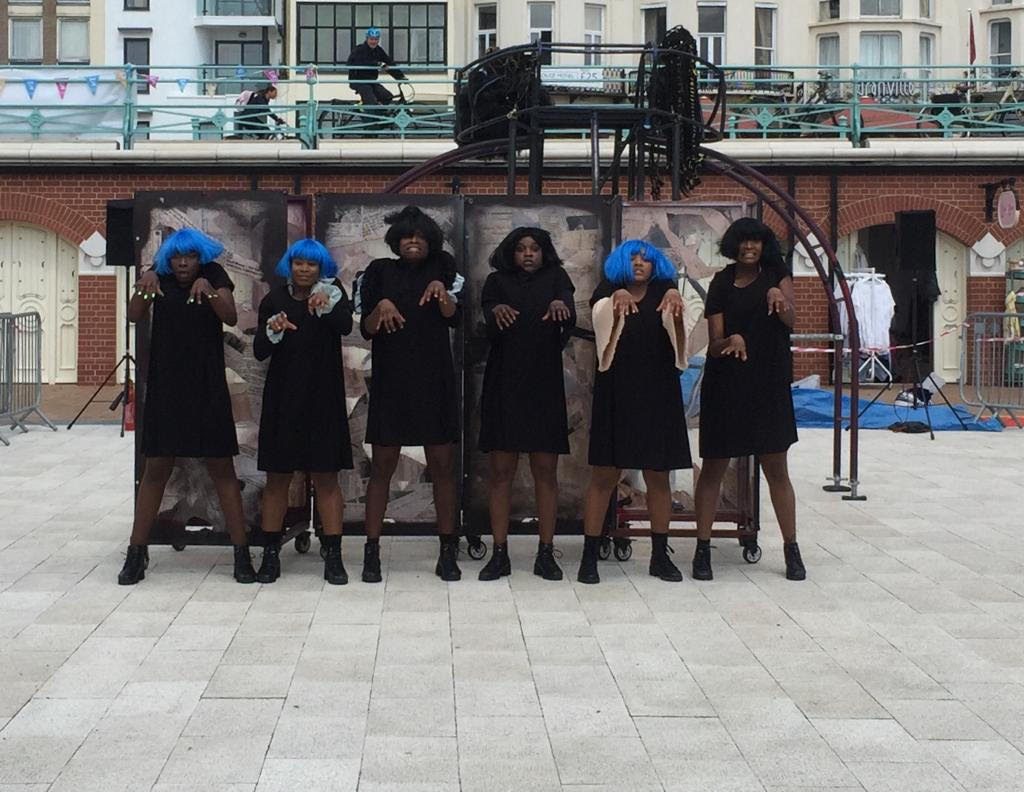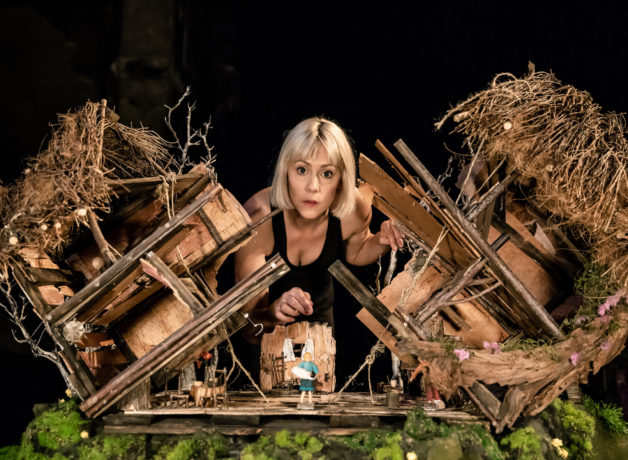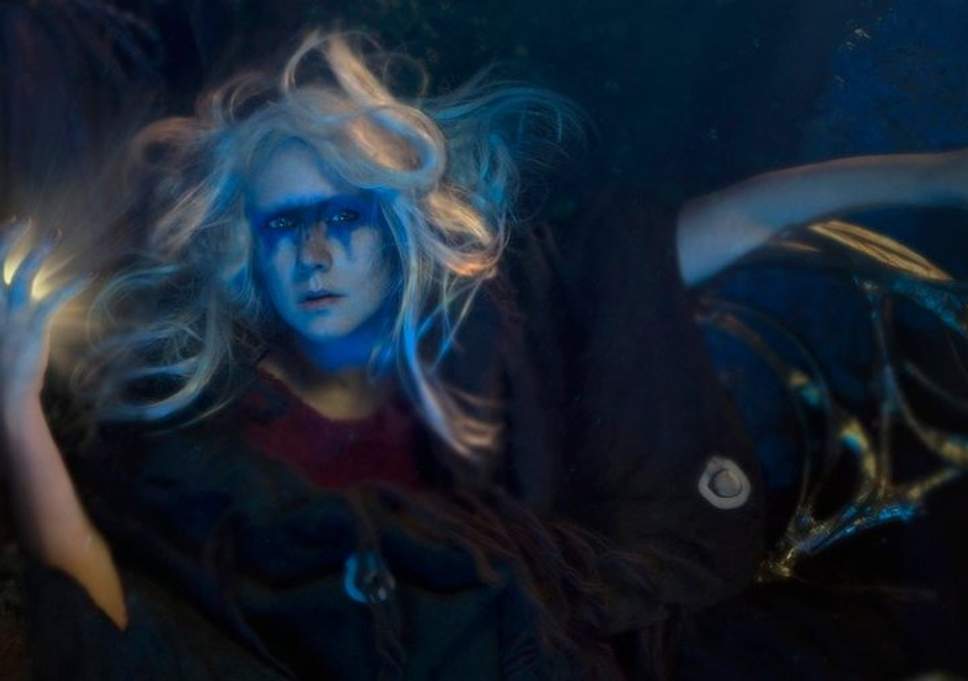Lots to look at before the show begins… Or to put it another way, this show is part installation, part performance. There is no line drawn – both elements co-exist in this space, which will become the site for a ritual exploration of ‘personal and public histories and notions of identity’.
The lights are up. We see, upstage, a small table and two chairs, a framed photo of a woman on the table. Behind, a silver foil wall hanging. Stage right, a piano with a baby doll sat on the stool, and a screen above it. Centre-stage, a pile of sparkly white fabric, its tangled tentacles making it look like a discarded Carnival jellyfish costume. Above it, a small chandelier on a rope. Also hanging down, two white cotton women’s nightdresses.
The installation draws the auditorium into the stage space. There’s another of those vintage Victorian nighties hanging over the auditorium. On and offstage, electric fans. To each side of the stage are a number of books carefully placed on narrow ledges – I note Alice Walker’s In Search of Our Mothers’ Gardens. On our seats, glossy print-outs on photographic paper, each with a short text and an image, marking the murder of men of colour by white men: 1999, four men acquitted for the killing of Amadou Diallo; 1968, three students killed in the Orangeburg Massacre; 1973, officer Thomas Shea acquitted of killing 10-year-old Clifford Glover; 2015, Samuel DuBose shot in the head by officer Ray Tensing; 2014, Michael Brown fatally shot by Darren Wilson. There are more. Also on each seat, a small chocolate wrapped in silver foil. The chocolates are called Kisses.
There is the sound of hearty laughter from the back of the auditorium, and we turn to see a glorious figure – a tall and broad-shouldered man with a big smile, dressed in an enveloping velvet gown – making his way through the space. He’s carrying a tray of the chocolate Kisses, and he hopes we appreciate that he’s brought these over from America for us…
This is Jaamil Olawale Kosoko – a Nigerian-American poet and Afro-Futurist performance artist, who is here to engage us in the Séancers ritual. He will move freely in time, embracing the world of the living and the world of the dead. Acting as a medium, he will confront and mourn key moments of racist trauma and violence. Séancers is both a cathartic mourning for those black men slaughtered by racist white men; and a joyous celebration of the powerful black women who spearheaded the civil rights movement, and continue to lead the way as writers, philosophers, and scholars. It is also an autobiographical piece, charting a personal journey as Jaamil embraces and celebrates his own black and queer identity. His spirit guides in this endeavour are the Afro-American Mothers who are, in one way or another, in this space. Alice Walker, Maya Angelou, Howardena Pindell, Ruby Sales, Audre Lord – and Jaamil’s own mother.
Another female element in the space: Tété the little doll, who is lifted from her place by the piano and offered out to an audience member, who is asked to look after her – ‘and no putting her under your seat on the floor’ adds Jaamil. I’m honoured to be chosen as Tété’s temporary mother and I hold her in my arms throughout the performance. I see her as representing all the lost (black) children – and also as the hope for the future, the innocent child who expects and deserves the best that life can offer.
There are two other artists in the space, forming a ‘triangulation’ with Jaamil. There is, up on a balcony, fellow séancer, sound designer and engineer Jeremy Toussaint-Baptiste. Then, in the front row, mic in hand, there is the guest séancer – performer, writer and academic Season Butler. As Jaamil settles himself on stage, the velvet cloak removed to reveal a tight-fitting bodysuit, Season muses on what she is seeing and noting in the space. She mentions the books on the shelves to the side, and talks of the ‘homage’ to the Mothers that is being made.
These powerful women spirits manifest in different ways throughout the performance ritual. The photo on the table is Jaamil’s mother. Her influence on her son is publicly acknowledged and honoured. Audre Lorde’s devastating poem Power is delivered in full, with enormous strength and presence, by Jaamil, as he moves from direct communication with his audience and fellow séancers into his own ritual performance space. The poem starts: ‘The difference between poetry and rhetoric / is being ready to kill / yourself / instead of your children…’ and the words ring out, electrifying the audience, who take a collective in-breath. We meet Howardena Pindell through samples from her film Free, White and 21, an ironic reflection on how it felt to be a black woman coming of age in 1960s America. Pindell filmed herself saying the words ‘I’m free, white and 21’ whilst wearing a white mask with a blonde wig, and Jaamil follows her lead by also creating a white female persona through the donning of mask and wig, voicing the words in tandem with the recording. We experience civil rights heroine and philosopher Ruby Sales via an audio clip from Where does it hurt? a reflection on the ‘spiritual crisis in White America’ – her words echoed and re-voiced by Jaamil, who moves through the auditorium saying ‘I want a liberating White theology. I want a theology that speaks to Appalachia’.
All of these texts and clips are merged expertly with extraordinary visual pictures, spellbinding sections of intense movement work, and ritualistic engagement with the objects in the space. There are numerous costume changes – although that phrase doesn’t do justice, they are more than that, they are metamorphoses – as Jaamil embodies and celebrates iconic black and queer imagery. In one section, he looks like a member of a 1970s American funk band; in another he’s a West African shaman; and then again, he’s a Superstar from Warhol’s Factory. Often he is many things all at once. There is an extraordinary scene where, delving into the pile of fabric, he pulls out masks and moulds and morphs into a many-headed creature, as if carrying all of humankind on his body – a kind of magical living puppet processing across the stage and beyond.
It is such a wonderful show. The visual images are beautiful and haunting; the sound design superb; the texts, presented in so many different ways, are both jarring and inspiring. The structure of the piece – in which we are gently eased into the ritual space, allowed time to feel the shifts in tone and performance mode – is caring and respectful of its audience.
When the show ends, there is no bow. Jaamil exits, and we are left, somewhat dazed, looking at a stage strewn with the remains of the process. Only the objects are there to receive our applause.
Séancers is described in the post-show discussion as ‘both a wake and an awakening’ – which seems to sum it up pretty accurately. I leave feeling that I have been generously invited into a communion.


